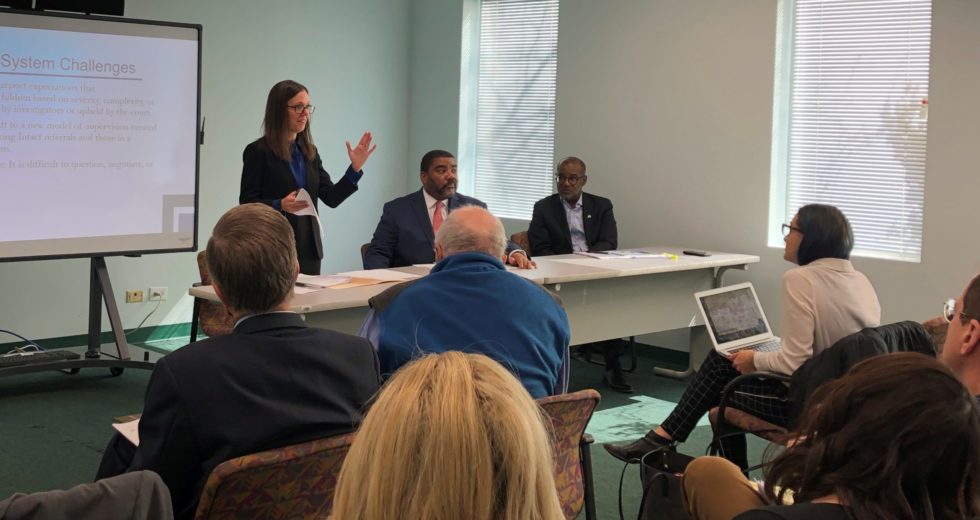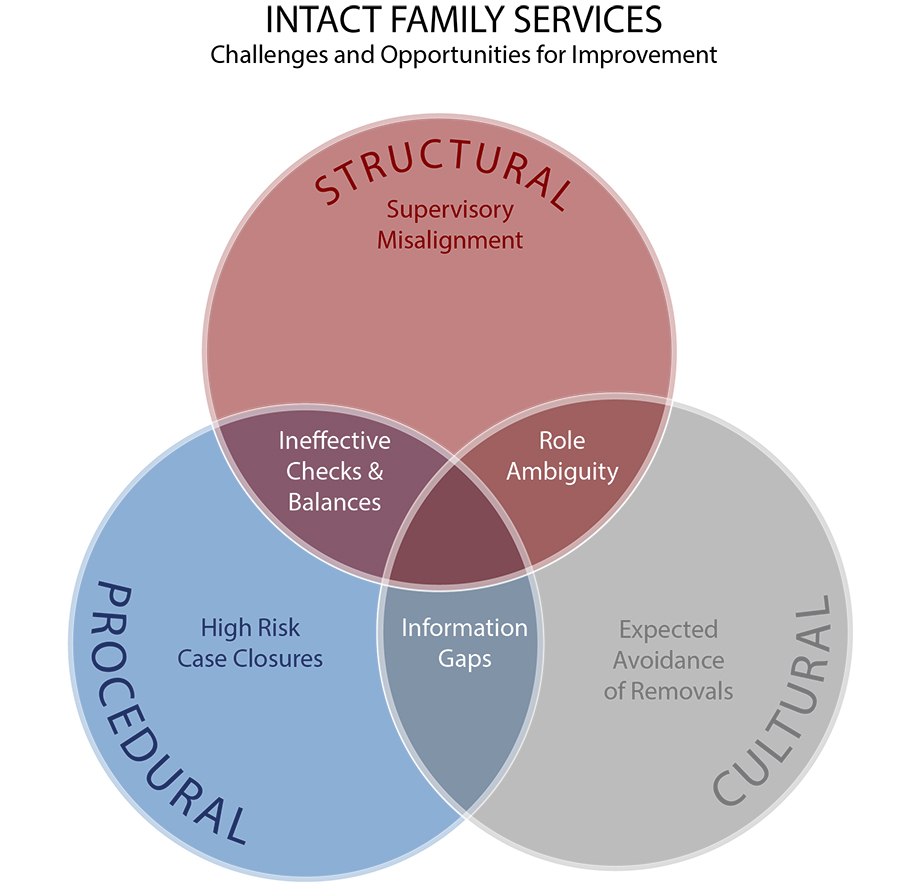Systemic Challenges at Illinois DCFS Contribute to Oversight Lapses in Child Fatality Cases

This Review identifies systemic factors that contributed to child deaths and critical incidents among children whose families received Intact Family Services (Intact) from the Illinois Department of Children and Family Services. It identifies opportunities to make structural, procedural and cultural shifts in the delivery of services that aim to prevent foster care placements. Chapin Hall offers strategic recommendations to IDCFS for the short, medium, and long term to refine programs and policies so they are better aligned with positive outcomes and best practice approaches.
What We Did
To understand the complex interaction between individual decision making and system influences, Chapin Hall applied a multidisciplinary systems approach, grounded in safety science, to reviewing critical incidents among families receiving Intact. This Review used four approaches to understanding the systemic factors contributing to these incidents: (1) analysis of contributing factors in a review of Child Death and Serious Injury Investigation (DSII) reports produced by the Illinois Office of the Inspector General (OIG); (2) systems analysis of three recent child death cases; (3) document reviews of policies, transmittals, protocols, forms, and evaluations concerning Intact; and (4) stakeholder interviews with administrators, leaders, providers, monitors, and advocates.
 What We Found
What We Found
Nationally, 1,750 children died of abuse or neglect in 2016, a 7.4% increase over the 2012 rate of child maltreatment deaths. The national rate of death due to child maltreatment was 2.36 among 100,000 children in the population in 2016; in Illinois, this rate was 2.16 per 100,000. The number of child maltreatment deaths in Illinois has decreased every year since 2014, while the number of child abuse or neglect victims has increased. Over the last five years, Intact cases represented 15% of the 41 deaths included in the OIG’s Death and Serious Injury Investigations.
Chapin Hall found systemic influences that create barriers to effective service delivery to Intact families, including interrelated structural, procedural, and cultural challenges.
- Structural issues refer to the way in which teams and individuals are organized and the varying degrees of accountability they hold for system outcomes.
- Procedural issues relate to case flow and business processes.
- Cultural issues are commonly held beliefs and values expressed by multiple stakeholders representing different perspectives.
Chapin Hall identified six priorities for improvement, illustrated in the diagram above. They include the avoidance of removals, supervisory misalignment, ineffective checks and balances, role ambiguity, information gaps, and protocols for closing high risk cases.
What It Means
Chapin Hall generated nine recommendations to address these and other issues:
- develop and refine a protocol for closing Intact cases;
- clarify goals and expectations across staff roles;
- utilize evidence-based approaches to preventive case work;
- improve the quality of supervision;
- adjust the preventive service array to meet the needs of the population;
- restructure preventive services, including Intact;
- work with courts and State’s Attorneys to refine criteria for removal in complex and chronic family cases;
- redesign assessment and intake processes; and
- direct attention to cases at greatest risk of severe harm.
Implementation of some of these recommendations, such as improving supervision and deploying evidence-based strategies, will build upon and leverage work currently underway. Other recommendations will require DCFS to revisit and adjust current strategies to accommodate innovative and best practice approaches tested in other child welfare systems. The Department is working to design an implementation plan that will sequence and prioritize action steps to address shortcomings and provide more effective services to children and families.
Systemic Review of Critical Incidents Executive Summary - Systemic Review of Critical Incidents


 Thank you for your interest in Chapin Hall’s research. Please share some information to access this file.
Thank you for your interest in Chapin Hall’s research. Please share some information to access this file.